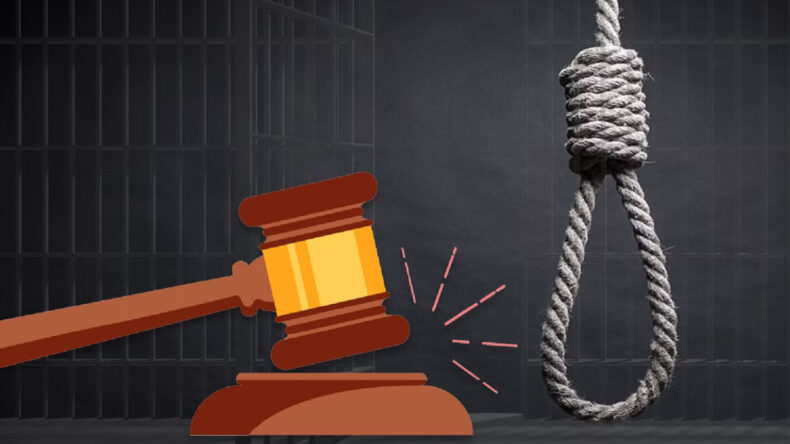
Supreme Court Unveils Grave Flaws in Rape and Murder Case, Orders Fresh Review.
In a landmark decision that has sent shockwaves through the Indian legal system, the Supreme Court has set aside a Patna high court order confirming the death sentence of a man convicted of the rape and murder of his 10-year-old neighbor in 2015. The three-judge bench, comprising Justices BR Gavai, JB Pardiwala, and PK Mishra, has not only overturned the lower court’s ruling but has also expressed strong disapproval of the conduct of investigators, prosecutors, and judges who were involved in the case. The Supreme Court’s intervention was prompted by serious discrepancies in the investigation and trial process, which, if left unaddressed, could have led to a miscarriage of justice.
Munna Pandey, the appellant in this case, had been languishing in prison since 2015 after being charged with the rape and murder of a young girl in his own house. The trial court had found him guilty in 2017, and the Patna high court had upheld his death sentence in 2018. However, the Supreme Court’s close examination of the case has revealed a disturbing pattern of negligence, lapses, and missed opportunities to uncover the truth.
The most glaring issue raised by the Supreme Court is the failure of those involved in the investigation to adhere to basic procedural standards. The police did not conduct a medical examination of the accused, Munna Pandey, and crucially, they did not send his undergarments for forensic examination. In a case that heavily relied on circumstantial evidence, this failure to secure vital medical evidence was a grave oversight. Even more shocking was the revelation that the victim’s vaginal swabs, which were crucial for forensic analysis, were not produced during the trial. These lapses, as highlighted by the Supreme Court, call into question the integrity of the entire investigation process.
Furthermore, the bench pointed out discrepancies in witness statements that were not properly addressed during the trial. Witnesses who initially claimed to have seen the accused’s juvenile brother-in-law at the scene of the crime later altered their statements. Astonishingly, neither the public prosecutor nor the trial court confronted these witnesses for changing their testimonies. This failure to rigorously cross-examine witnesses allowed inconsistencies to persist in the case, undermining its credibility.
The Supreme Court’s scathing rebuke extended beyond the investigators and prosecutors to the judges involved in the case. The bench condemned the passive role played by judges, emphasizing the importance of judicial impartiality and active engagement in proceedings to uncover the truth. The judges stressed that justice could only be served when judges take a proactive role in elicitating all relevant information and ensuring a fair and impartial trial. They also noted the investigating officer’s statement that senior officers had instructed her not to obtain the forensic report, a revelation that raised serious questions about the integrity of the investigation.
The Patna high court, in particular, came under severe criticism for its failure to address these critical issues. The Supreme Court observed that the high court had completely overlooked the flaws in the case, which, if properly examined, could have led to a different outcome. It called on the high court to request a seasoned criminal lawyer to represent Munna Pandey during the fresh review, underlining the importance of robust legal representation for all parties in the pursuit of justice.

The Supreme Court’s decision is not merely a correction of a miscarriage of justice; it underscores the fundamental principles of a fair trial enshrined in Article 21 of the Indian Constitution. The bench emphasized that a free and fair trial is essential for maintaining public confidence in the judicial system. Injustice to the accused is as detrimental to society as injustice to the victim. The court’s commitment to ensuring justice is done, where no innocent person is punished, and the guilty are not allowed to escape, resonates as the central theme of this landmark judgment.
In its 68-page judgment, the Supreme Court reaffirmed that the truth must prevail for justice to be served. Truth is the cornerstone of justice, and the criminal justice system’s primary purpose is to ensure that justice is administered fairly and impartially. The bench’s scrutiny of the case revealed the importance of active judicial involvement and the pursuit of truth in achieving this ultimate goal.
The Supreme Court’s intervention in this case highlights the need for rigorous oversight of the criminal justice system to prevent wrongful convictions and miscarriages of justice. The court’s willingness to question established practices and demand accountability from all stakeholders sets a significant precedent for future cases. It also serves as a stark reminder that justice is not just about punishing the guilty but also ensuring that the innocent are protected from wrongful conviction.
In conclusion, the Supreme Court’s decision to set aside the death sentence in the Munna Pandey case is a landmark moment in India’s legal history. It not only corrects a grave miscarriage of justice but also sends a powerful message about the importance of upholding the principles of a fair trial, impartiality, and the pursuit of truth.













